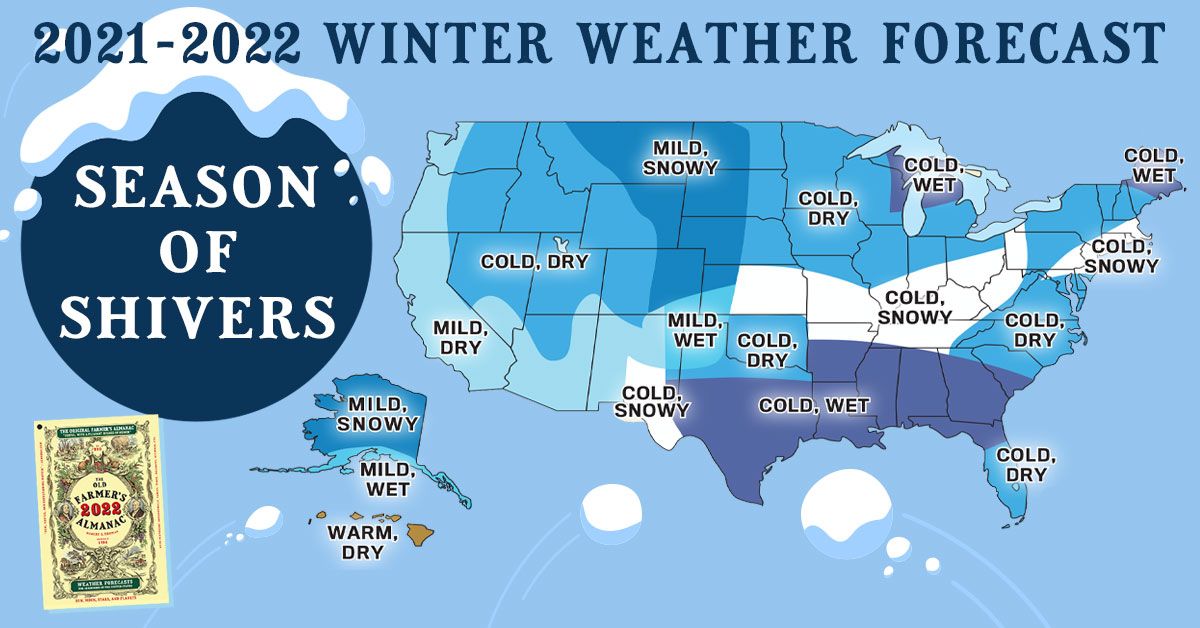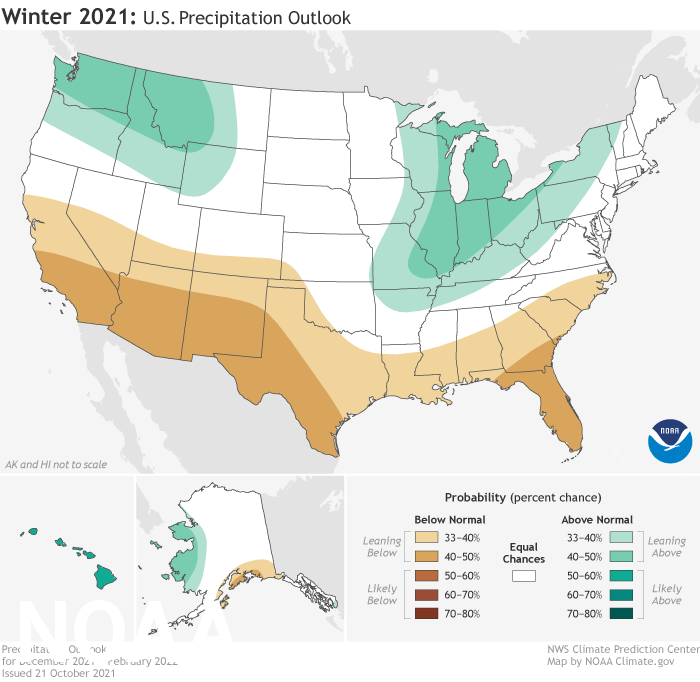For more than two centuries, the Old Farmer’s Almanac guided those living in North America with weather predictions from the so-described “calendar of the heavens.” The secret weather forecasting formula, which is currently tucked in a black tin box at the Almanac offices in New Hampshire, called for a “season of shivers” in the U.S. during the 2022 winter.
“This coming winter could well be one of the longest and coldest that we’ve seen in years,” said Janice Stillman, editor of The Old Farmer’s Almanac, in a news release.
“Positively bone-chilling, below average temperatures” are anticipated to occur across most of the U.S. while Canadians should prepare to “weather the storms,” according to the lifestyle website, Simplemost.
First published in 1792 when former U.S. President George Washington was in office, the reference guide is America’s oldest, continuously published periodical, described the publisher. Since the time of its first editor, Robert B. Thomas, the almanac records and predicts astronomical events, tides, and weather events 12 months in advance. Editors keep the methodology close to the cuff, but do acknowledge that there may be some truth to the reliability of folklore combined with scientific calculations that include solar science, climatology, and meteorology.
“We predict weather trends and events by comparing solar patterns and historical weather conditions with current solar activity,” wrote the publishers.
“Although neither we nor any other forecasters have as yet gained sufficient insight into the mysteries of the universe to predict the weather with total accuracy, our results are often very close to our traditional claim of 80 percent.”
In general, almanac predictors spot temperature and precipitation deviations based on 30-year statistical averages prepared by the government every 10 years. In 2022, forecasts were based on tabulations between 1981 and 2010 while in 2023, predictions will be made using data ending in 2020.
Above-average snowfall is expected in eastern Montana, southward to the western areas of the Dakotas and into northeastern Colorado. Though these locations are expected to see normal temperatures, several storm systems throughout winter will likely bring abundant snowfall.
New England, Ohio Valley, northern portions of the Deep South and southeast New Mexico will also likely see lots of snow while western areas, including the Pacific Ocean and the Southwest, are expected to be mostly dry.
The almanac predictions mostly hold up against the winter outlook published by the National Oceanic and Atmospheric Administration (NOAA) in October 2021. Conducted in collaboration with the National Weather Service (NWS), the forecast called for La Nina climate conditions that will lend to wetter-than-average conditions across portions of the Northern U.S., primarily in the Pacific Northwest, northern Rockies, Great Lakes, Ohio Valley and western Alaska.
“Consistent with typical La Nina conditions during winter months, we anticipate below-normal temperatures along portions of the northern tier of the U.S. while much of the South experiences above-normal temperatures,” said Jon Gottschalck of NOAA’s Climate Prediction Center in a news release.
“The Southwest will certainly remain a region of concern as we anticipate below-normal precipitation where drought conditions continue in most areas.”
When it comes to temperature, NOAA and NWS expect warmer-than-average conditions in the southern part of the U.S. and much of the eastern U.S. and below-average temperatures for southeast Alaska, Pacific Northwest, and eastward to the northern plains. Meanwhile, the Upper Mississippi Valley and small areas of the Great Lakes remain undetermined.
In terms of precipitation, the Pacific Northwest, northern Rockies, Great Lakes, parts of Ohio Valley, and western Alaska all have the greatest likelihood for wetter-than-average conditions. Drier conditions are expected in southcentral Alaska, southern California, and both the Southwest and Southeast.
Sources
“History of The Old Farmer’s Almanac.” Almanac.Com, https://www.almanac.com/content/history-old-farmers-almanac. Accessed 26 Nov. 2021.
“How The Old Farmer’s Almanac Predicts The Weather.” Almanac.Com, https://www.almanac.com/how-old-farmers-almanac-predicts-weather. Accessed 26 Nov. 2021.
“Predicting the Weather.” Almanac.Com, https://www.almanac.com/topics/weather/weather-forecasts/predicting-weather. Accessed 26 Nov. 2021.
U.S. Winter Outlook: Drier, Warmer South, Wetter North with Return of La Nina | National Oceanic and Atmospheric Administration. https://www.noaa.gov/news-release/us-winter-outlook-drier-warmer-south-wetter-north-with-return-of-la-nina. Accessed 26 Nov. 2021.
Winter Weather Forecast for 2021-2022 | Almanac.Com. https://www.almanac.com/winter-extended-forecast-farmers-almanac. Accessed 26 Nov. 2021.



